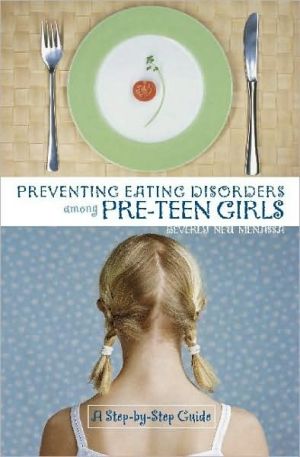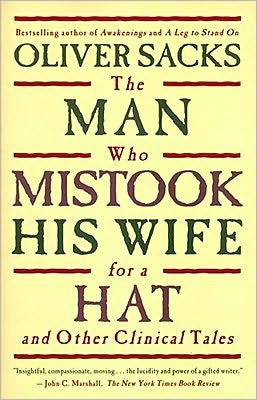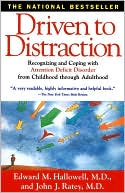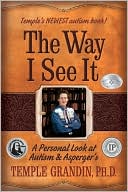Preventing Eating Disorders among Pre-Teen Girls: A Step-by-Step Guide
A must for parents, teachers and counselors, this book targets preadolescent girls aiming to engage them in educational activites that will empower them to avoid eating disorders. The author examines eating disorders from sociocultural and feminist perspectives showing how disorders are most often caused by overexposure to media messages, an unrealistic cultural fascination with thinness, by continuous anaylsis of our bodies and a disordered cultural view of food. Then Menassa presents a...
Search in google:
Menassa, a mental health counselor, examines eating disorders from social-cultural and feminist perspectives, then presents a 10-session guide to prevention that engages pre-teen girls in activities that empower them the think critically about media messages, make healthy food choices, deal with stress, and accept their bodies. Sixty pages of appendices offer forms and questionnaires, activities and information packets for sessions, and resource materials for parents. Annotation © 2004 Book News, Inc., Portland, OR Kim Carter - VOYA Mental health counselor Menassa is concerned with fading media interest in eating disorders, something she attributes to the fact that "young women with anorexia do not look much different from our favorite actors and models, so the shock value has lost its shock." This book is her effort to preempt the "difficult, painstaking, and intense" treatment for eating disorders whose "result can lead to health, or if unsuccessful, death." Following a literature review on the etiology of eating disorders and a summary of risk factors, the book presents "Body Armor," a prevention program for young girls ages nine to twelve. Because "discussing behaviors of bulimia may inadvertently teach girls how to lose weight in unhealthy ways," the program focuses on concrete cognitions: "how to cope with stress, choose healthy food, cope with teasing, resist media messages, become a watchdog against media messages that portray women negatively." The program integrates aspects from several models, focusing on empowering young girls to "create themselves and change their environments" and features use of Internet activities in hopes that girls will continue to access the sites after the program concludes, aiming at long-term attitudinal and behavioral changes. The Body Armor program consists of ten ninety-minute sessions, each carefully detailed, including Focus, Objectives, Behavioral Outcomes, Activities, and Processing Questions. Although each session's plan is comprehensively presented, Menassa stresses the need for involving an expert, such as a school counselor. Guidelines are provided for computer-assisted interventions, parental involvement, selection of group members, training the co-facilitators (incase parents are chosen for this role), and evaluation methods. A section on ethical and multicultural issues examines ethical concerns but does not actually address potential multicultural issues. This last criticism aside, the book offers a useful framework for a targeted prevention program. Many activities in the Body Armor program parallel therapy activities described in Natalie Friend's novel Perfect (Milkweed Editions, 2004; see VOYA review in this issue), in which thirteen-year-old Isabelle must attend "Eating Disorder and Body Image Therapy Group." Although the book might seem to be a natural companion to the prevention program, using it as such would run the aforementioned risk of inadvertently teaching girls how to lose weight in unhealthy ways while not sufficiently illustrating the harmful effects of bulimia. 2004, Praeger, 113p.; Index. Biblio., Ages adult professional.
Ch. 1Literature review1Ch. 2Rationale for risk factors17Ch. 3Overview of the body armor program25Ch. 4Sessions39AppTaking a closer look71AppHaving a voice77AppScales are for fish79AppCoping with stress81AppBody image87AppPutting it all together89AppThe more you know93
\ VOYAMental health counselor Menassa is concerned with fading media interest in eating disorders, something she attributes to the fact that "young women with anorexia do not look much different from our favorite actors and models, so the shock value has lost its shock." This book is her effort to preempt the "difficult, painstaking, and intense" treatment for eating disorders whose "result can lead to health, or if unsuccessful, death." Following a literature review on the etiology of eating disorders and a summary of risk factors, the book presents "Body Armor," a prevention program for young girls ages nine to twelve. Because "discussing behaviors of bulimia may inadvertently teach girls how to lose weight in unhealthy ways," the program focuses on concrete cognitions: "how to cope with stress, choose healthy food, cope with teasing, resist media messages, become a watchdog against media messages that portray women negatively." The program integrates aspects from several models, focusing on empowering young girls to "create themselves and change their environments" and features use of Internet activities in hopes that girls will continue to access the sites after the program concludes, aiming at long-term attitudinal and behavioral changes. The Body Armor program consists of ten ninety-minute sessions, each carefully detailed, including Focus, Objectives, Behavioral Outcomes, Activities, and Processing Questions. Although each session's plan is comprehensively presented, Menassa stresses the need for involving an expert, such as a school counselor. Guidelines are provided for computer-assisted interventions, parental involvement, selection of group members, training the co-facilitators (incase parents are chosen for this role), and evaluation methods. A section on ethical and multicultural issues examines ethical concerns but does not actually address potential multicultural issues. This last criticism aside, the book offers a useful framework for a targeted prevention program. Many activities in the Body Armor program parallel therapy activities described in Natalie Friend's novel Perfect (Milkweed Editions, 2004; see VOYA review in this issue), in which thirteen-year-old Isabelle must attend "Eating Disorder and Body Image Therapy Group." Although the book might seem to be a natural companion to the prevention program, using it as such would run the aforementioned risk of inadvertently teaching girls how to lose weight in unhealthy ways while not sufficiently illustrating the harmful effects of bulimia. 2004, Praeger, 113p.; Index. Biblio., Ages adult professional. \ —Kim Carter\ \








